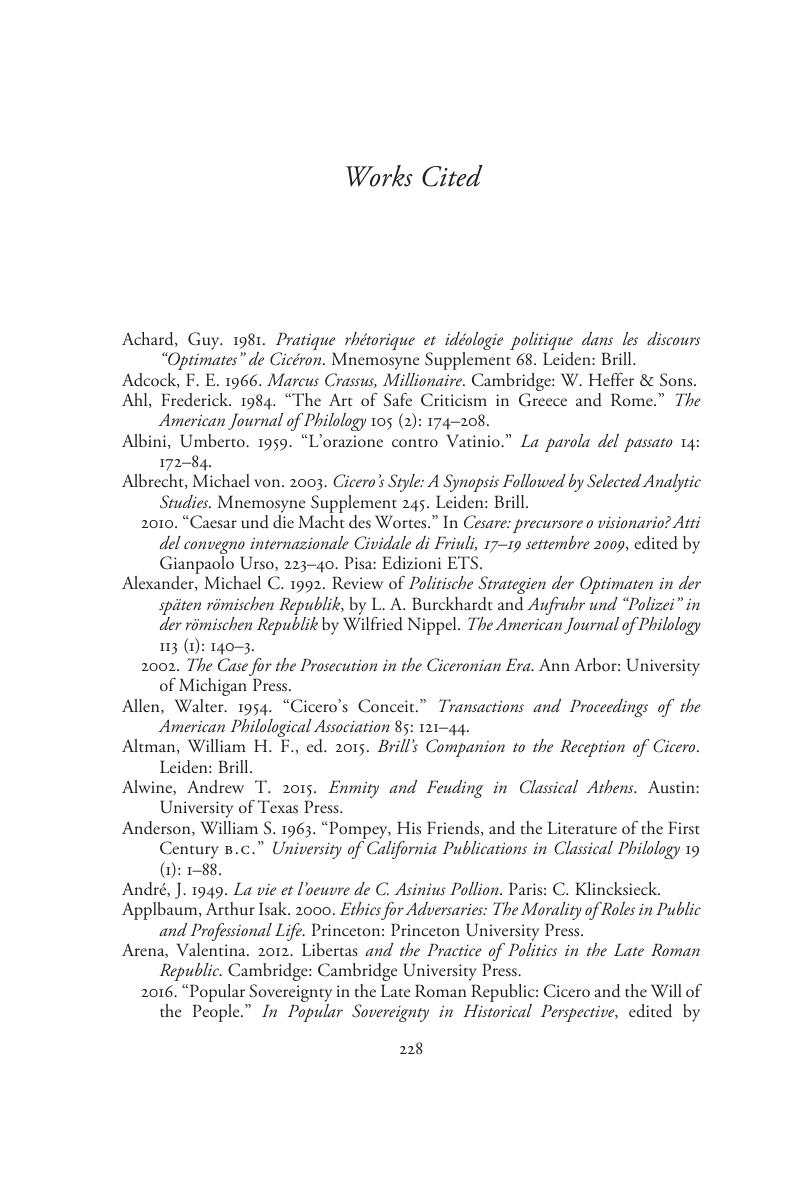Book contents
- Cicero’s Political Personae
- Cicero’s Political Personae
- Copyright page
- Contents
- Preface
- Acknowledgments
- Introduction
- Chapter 1 The Orator as Attacker
- Chapter 2 The Orator as Friend
- Chapter 3 The Orator as a Martyr
- Chapter 4 The Orator without Authority
- Chapter 5 The Champion of the Senate
- Chapter 6 The Popular Orator
- Chapter 7 The Voice of a Faction
- Chapter 8 A Great Man’s Spokesman
- Conclusion
- Works Cited
- Index locorum
- Index
- References
- Cicero’s Political Personae
- Cicero’s Political Personae
- Copyright page
- Contents
- Preface
- Acknowledgments
- Introduction
- Chapter 1 The Orator as Attacker
- Chapter 2 The Orator as Friend
- Chapter 3 The Orator as a Martyr
- Chapter 4 The Orator without Authority
- Chapter 5 The Champion of the Senate
- Chapter 6 The Popular Orator
- Chapter 7 The Voice of a Faction
- Chapter 8 A Great Man’s Spokesman
- Conclusion
- Works Cited
- Index locorum
- Index
- References
Summary

- Type
- Chapter
- Information
- Cicero's Political Personae , pp. 228 - 260Publisher: Cambridge University PressPrint publication year: 2020



